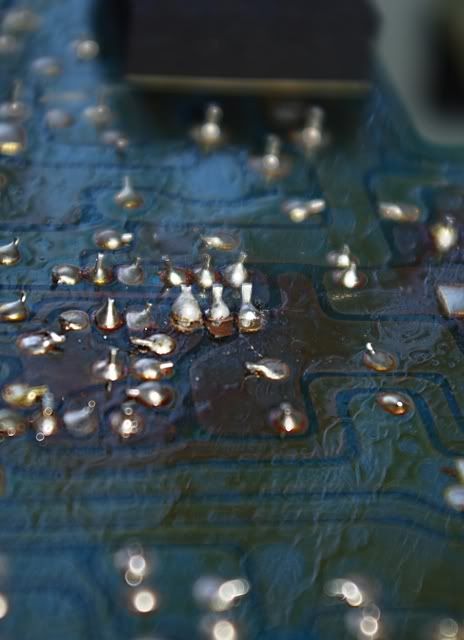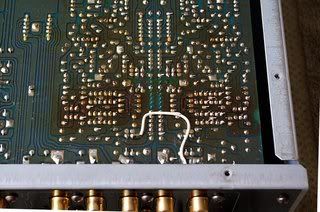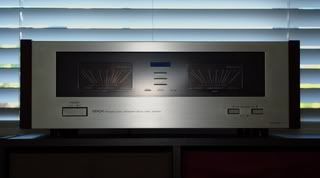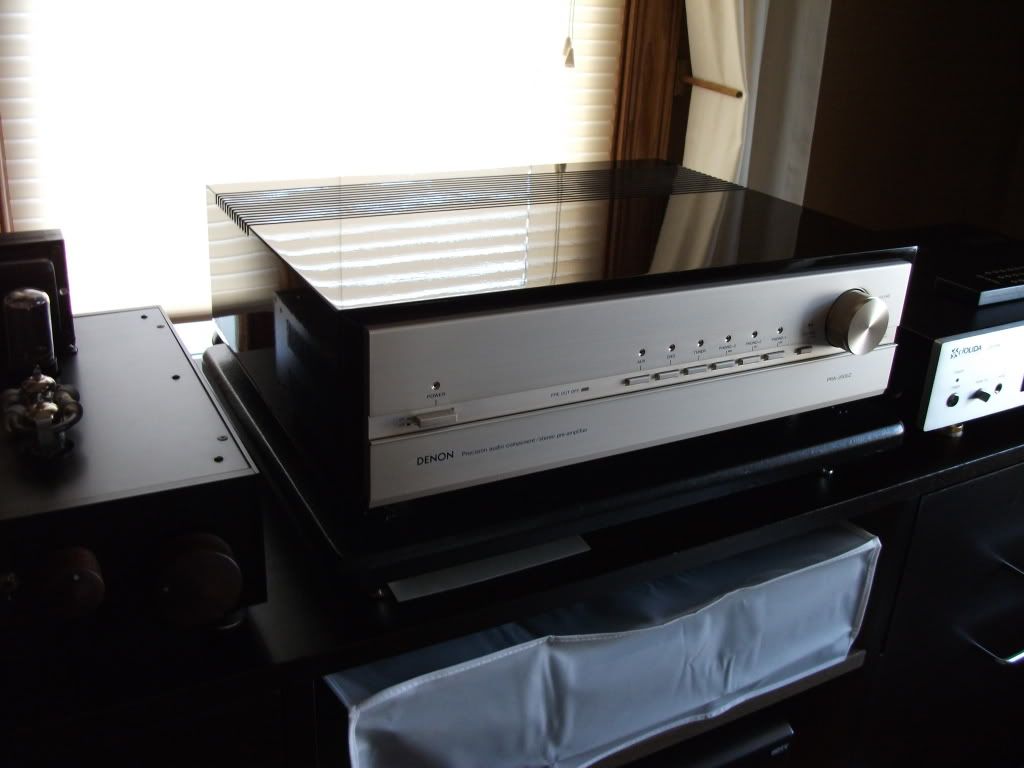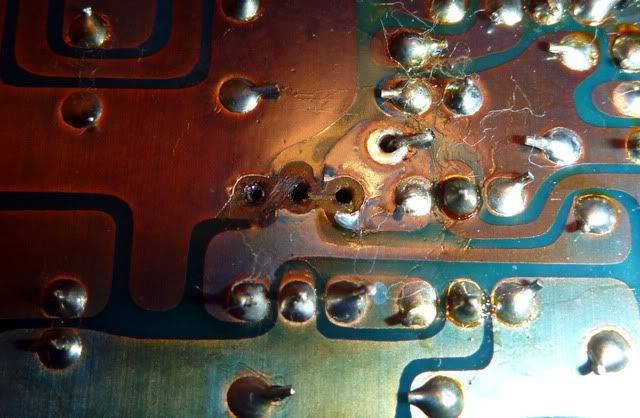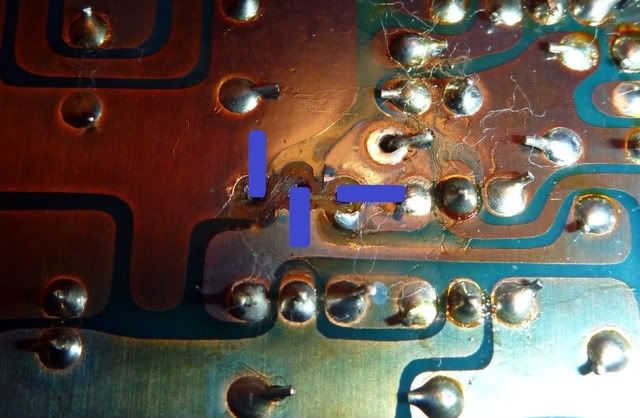I recently acquired a champagne-colored Denon PRA-1000 pre-amp and POA-1500 amp. They really are good-looking units featuring a clean and uncluttered design. Denon designed these units before manufacturers began producing button-heavy rigs representative of the eighties. After unpacking, connecting, and admiring the pre-amp and amp combo, I pressed the amp’s power switch and watched in silent reverence while the built-in-test carried out its required duties and informed me of its completion by illuminating the massive power meters. Next, I pressed the power button on the pre-amp, and almost instantly, the amp's thermal protection light illuminated. The amber light raised alarm and my heart sank. Tonight my personal quest for faithful musical reproduction would reach no new territory, no meters swaying to guitars, drums, and passionate voice. Tonight, I will be admiring these amps silently, and with these photos, I invite you to do the same.
Here is the pre-amp:
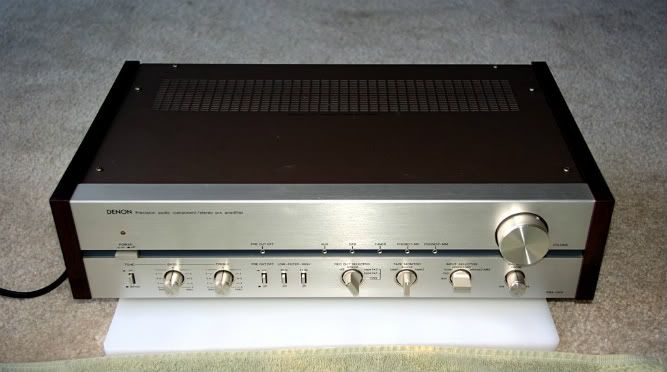
Here is the pre-amp:

Attachments
Last edited:





